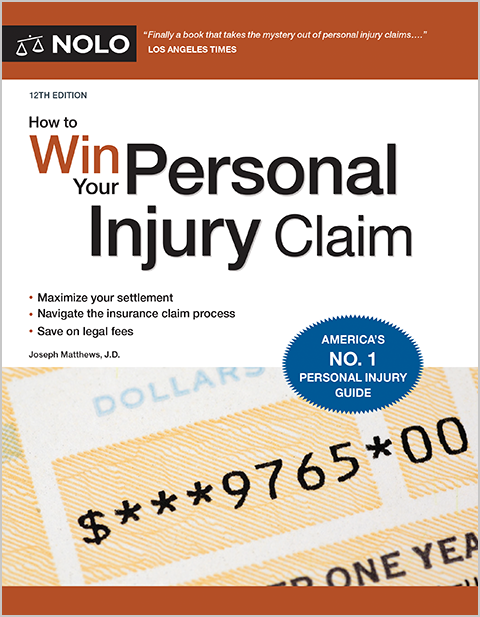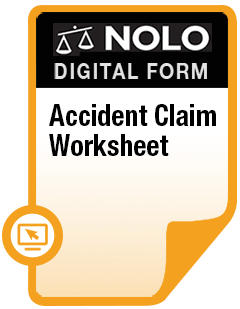An in-depth look at who can file a California wrongful death case, the damages you might collect, and more.
If an accidental or intentional act causes the death of a family member in California, you might have the right to file a wrongful death lawsuit. A wrongful death suit compensates survivors for losses they suffer because of the death. In this article we'll discuss the rules for wrongful death lawsuits in California, as well as other potential options for seeking compensation.
- What Is "Wrongful Death" in California?
- Differences Between a Wrongful Death Lawsuit and a Criminal Homicide Case
- Who Can Make a Wrongful Death Claim in California?
- What Damages Can You Collect in a Wrongful Death Case?
- How Long Do I Have to File a California Wrongful Death Lawsuit?
- Wrongful Death Lawsuits Versus Survival Actions
- Other Options for Seeking Compensation
- Get Help With Your California Wrongful Death Lawsuit
What Is "Wrongful Death" in California?
In California, a wrongful death occurs when one person (in legal terms, the "decedent") dies because of the misconduct of another person or entity. A wrongful death claim often results from things like:
- negligence-based incidents (for example, car accidents, dangerous premises, and defective products)
- medical malpractice, and
- intentional acts (even crimes).
(Learn about the basics of wrongful death lawsuits and settlements.)
Differences Between a Wrongful Death Lawsuit and a Criminal Homicide Case
The same act or event can give rise to both a wrongful death lawsuit and a criminal homicide prosecution. For example, if Smith deliberately runs over and kills Jones in Smith's car, Smith is likely to face a murder charge. Jones's survivors might also bring a wrongful death case against Smith. How are the two cases different?
The Consequences
The result of a successful wrongful death claim is expressed solely in dollars. The party responsible for the death (the "defendant") will be ordered to pay the decedent's survivors money damages. (We'll talk more about damages in a wrongful death case below.)
The consequences of a murder conviction are much more severe. A convicted criminal defendant can expect prison time, probation, and perhaps an order to pay restitution to the decedent's surviving family members.
The Standard of Proof
The standard of proof refers to how much evidence is needed to prove that someone is legally responsible for a wrongful act. In a criminal case, the prosecutor must prove the defendant's guilt "beyond a reasonable doubt." This is the highest standard of proof in the law, and it sets a very high bar for the prosecution to clear.
In most civil lawsuits, including wrongful death cases, the defendant's liability need only be shown by a "preponderance of the evidence." Under this legal standard, the plaintiff (the party bringing the lawsuit) must show it's more likely than not that the defendant is responsible for the decedent's death.
(Learn more about proving liability in a wrongful death case.)
Who Can Make a Wrongful Death Claim in California?
California's wrongful death statute gives several people the right to bring a wrongful death lawsuit, and to receive compensation from a defendant. The state also has rules designed to make sure that everyone who might be entitled to compensation is aware of and included in any wrongful death action.
Who's Entitled to Compensation in a California Wrongful Death Lawsuit?
Spouses, children, and grandchildren. First priority to file a wrongful death lawsuit goes to:
- the decedent's surviving spouse or domestic partner
- the decedent's surviving children, and
- the children of any deceased child of the decedent.
Inheritance through Intestate succession. If there are no survivors in the group with first priority, a wrongful death lawsuit can be brought by anyone who would be entitled to the decedent's assets by intestate succession. The rules for intestate succession determine who's allowed by law to inherit a decedent's property if they die without a will. This group would include, among others, the decedent's siblings and parents (or legal guardians, if the parents are deceased).
(Learn more about California's rules for intestate succession.)
People who were financially dependent on the decedent. In addition to the people in the first two groups, these people can also bring a California wrongful death lawsuit if they can show they were financially dependent on the decedent:
- the decedent's "putative spouse" (someone who had a good faith but mistaken belief that they were in a lawful marriage with the decedent)
- children of the decedent's putative spouse
- the decedent's stepchildren
- the decedent's parents, and
- the decedent's legal guardians, if the decedent's parents are deceased.
(Cal. Civ. Proc. Code § 377.60 (2025).)
Who Files a Wrongful Death Lawsuit?
Multiple people may be entitled to compensation after a wrongful death. But this doesn't mean multiple people can file lawsuits. Instead, any wrongful death lawsuit must be filed on behalf of all the people who might be entitled to compensation. The case can be brought either by:
- the personal representative of the deceased person's estate, or
- the deceased person's heirs.
Lawsuits brought by the personal representative. Under California law, a "personal representative" is responsible for handling is the estate of a deceased person. A personal representative named in a will is called an executor; if a person dies intestate then the court appoints an administrator to perform the same duties. California law allows a personal representative to file a wrongful death lawsuit. This lawsuit is presumed to be on behalf of all heirs entitled to receive compensation under California's wrongful death statute.
Lawsuits brought by heirs of the deceased. A wrongful death claim can also be filed by any heir entitled to compensation under the wrongful death statute. Unlike a claim brought by a personal representative, a claim brought by one heir is not presumed to be on behalf of all the heirs. This means that the person filing the lawsuit must do their best to identify all other heirs, and add them to the lawsuit as plaintiffs.
Resolving disputes among heirs. Sometimes heirs might disagree with each other, or with the personal representative, over how to proceed. Ideally these disagreements would be worked out through conversations, rather than in court. However, there are legal options available if disputes among heirs can't be resolved. For example:
- If an heir disagrees with how a personal representative is handling a wrongful death lawsuit, they can move to intervene in the case. This doesn't create a new lawsuit, but it does allow the heir to advocate for their own interests instead of relying on the personal representative.
- If a lawsuit is filed by an heir, all heirs must be included as parties. But sometimes an heir might refuse to join the case as a plaintiff. In that situation, the heir can be added as a defendant. This doesn't mean they could end up owing money--they're still treated as potential beneficiaries. This procedure is just a way to get them involved in the case without needing their permission.
- If an heir is left out of a wrongful death lawsuit, and only finds out about it later, they can sue for their share of any wrongful death award or judgment.
(Cal. Civ. Proc. Code § 377.60 (2025); Ruttenberg v. Ruttenberg, 53 Cal. App. 4th 801 (1997); Adams v. Superior Court, 196 Cal. App. 4th 71 (2011).)
What Damages Can You Collect in a Wrongful Death Case?
In a successful wrongful death lawsuit, the plaintiffs are awarded damages to compensate them for their losses. We can look to the Judicial Council of California Civil Jury Instructions (CACI) to see what damages are allowed in wrongful death cases. Judges use jury instructions to educate jurors on the laws and legal concepts they'll apply during deliberations after a civil trial.
Specifically, CACI No. 3921 Wrongful Death (Death of an Adult) says that damages in a wrongful death case fall into two categories: economic and non-economic.
Economic damages can include:
- any financial support the decedent would have contributed to the family (with awards of future support reduced to present cash value)
- loss of gifts or benefits that family members expected to receive from the decedent
- the decedent's funeral and burial expenses, and
- the reasonable dollar value of household services that the decedent would have provided.
Non-economic damages typically include an estimate of the dollar values of:
- the decedent's lost "love, companionship, comfort, care, assistance, protection, affection, society, and moral support"
- the spouse or partner's loss of the enjoyment of intimacy with the decedent, and
- loss of the decedent's training and guidance.
Damage caps. There's no general cap on damages in a California wrongful death lawsuit. But the state's cap on medical malpractice damages does apply to a wrongful death claim resulting from medical malpractice injuries.
Punitive damages. When a defendant's behavior is particularly reckless or blameworthy, courts can award punitive damages to punish that defendant and deter other people from engaging in similar behavior. In California, punitive damages are only available if:
- the death was caused by homicide, and
- the defendant was convicted of a felony for that homicide.
(Cal. Civ. Proc. Code § 3294(d) (2025).)
Distribution of damages. Damages are awarded through a single lawsuit, and are supposed to compensate all eligible heirs. However, that doesn't mean the money is split equally. Each person eligible for compensation receives a share of the total award (or settlement) based on the specific harms they can show they've suffered. If the recipients can't agree on how to divide damages, the court can step in and decide for them. (Cal. Civ. Proc. Code § 377.61 (2025); In re Estate of Riccomi, 185 Cal. 458, 197 P. 97 (1921).)
How Long Do I Have to File a California Wrongful Death Lawsuit?
Like all states, California has laws called "statutes of limitations" that set deadlines for filing different kinds of lawsuits. The exact filing deadline for a wrongful death lawsuit will depend on the details of the case. So it's crucial to know the deadline that applies to your situation, and to consult an attorney if you have questions or concerns.
The standard deadline. In most cases, California's deadline for filing a wrongful death case is two years from the date of the decedent's death. (Cal. Civ. Proc. Code § 335.1 (2025).)
The medical malpractice deadline. In most medical malpractice cases, a lawsuit must be filed either:
- within three years of the date of the injury, or
- within one year of when the plaintiff discovered (or should have discovered) the injury.
Whichever deadline comes earlier is the one that applies. Sometimes plaintiffs can get additional time in medical malpractice cases. For example, more time is granted if the defendant intentionally concealed the harm they caused the deceased, or left a foreign object in the deceased's body during surgery. Different rules also apply to cases involving young children. (Cal. Civ. Proc. Code § 340.5 (2025)).
The deadline for lawsuits against the government. Like all states, California has special rules for lawsuits against the government. Before filing a wrongful death lawsuit, survivors must first meet a six-month deadline for filing a claim with the government agency responsible for the death. (Cal. Civ. Proc. Code § 911.12 (2025).)
Other rules and deadlines. The rules that determine the filing deadline for a wrongful death lawsuit can be complicated, and this section does not provide an exhaustive explanation of how the law works in every situation. If you're concerned about the timing of a potential wrongful death case, your best bet is to consult a California attorney with experience handling these kinds of claims.
Wrongful Death Lawsuits Versus Survival Actions
If someone is killed in an accident, or by another person's intentional act, survivors may be able to pursue a so-called "survival action" in addition to a wrongful death lawsuit. Unlike a wrongful death lawsuit, though, a survival action compensates the deceased person's estate for harm the person suffered while they were still alive. This makes it different from a wrongful death claim in several key ways.
What Damages are Available in a Survival Action?
In a survival action, the damages must be compensation for harm the deceased suffered while they were still alive. So, if someone is hurt in an accident, and later dies from those injuries, damages in a survival action could include things like the victim's medical expenses and lost wages. Traditionally, California has not allowed damages for pain and suffering, or for disfigurement, in survival actions. However, those damages are allowed in lawsuits filed from January 1, 2022, through December 31, 2025. In 2026 the state will revert to its old rule, unless the legislature updates the law. (Cal. Civ. Proc. Code § 377.34 (2025).)
Who Receives Compensation in a Survival Action?
Damages in a wrongful death lawsuit are based on how people have been harmed by the victim's death. Things work differently in a survival action. In a survival action, a deceased person's estate is allowed to collect damages that the person would have been entitled to if they'd survived. Therefore, any damages are paid to the estate. Those damages are then distributed according to the instructions in the deceased person's will (or, if they had no will, California's rules for intestate succession). In addition, since the damages are part of the estate, it's possible some portion of them could be used to satisfy the estate's outstanding debts.
What's the Statute of Limitations in a Survival Action?
Usually, the deadline for filing a survival action is the same deadline that would have applied if the deceased had not passed away. California's statute of limitations for personal injury cases is two years from the date of the incident. So, in general, the estate must file a lawsuit within two years from the date the deceased person was harmed. This deadline can be extended in rare cases (for example, in certain cases where the person was not immediately aware that they'd been harmed). But, in general, a person (or their estate) loses their right to bring a personal injury case if they miss this deadline.
However, California law recognizes that the time immediately following a person's death can be difficult and hectic for the people settling the estate. Therefore, if the usual statute of limitations deadline is within six months of the person's death, the estate gets a full six months from the date of death to file a survival action. This rule is designed to avoid situations where a valid claim is lost because the personal representative or heirs didn't have time to assess the facts, consider their options, and file suit. (Cal. Civ. Proc. Code § 366.1 (2025).)
Other Options for Seeking Compensation
A civil lawsuit may not be the only option--or even the best option--for seeking compensation after the death of a loved one. For example:- When a person is killed by a work-related injury or illness, their dependents may be entitled to death benefits through a California workers' compensation claim.
- California requires convicted felons to pay restitution to their victims. This can include compensation paid to the surviving dependents of a person killed by a criminal's act.
Get Help With Your California Wrongful Death Lawsuit
There are some kinds of legal claims you might be able to handle on your own. If you have a simple car accident case, for example--with undisputed facts, clear legal responsibility, and minor injuries--you might be able to get a fair settlement going it alone. But a wrongful death claim isn't one you want to try to settle without expert legal help.
Even if the facts aren't in doubt, and even if legal responsibility for the decedent's death is clear, coming up with an accurate value for the case—computing and proving all past and future damages—is no small task. You need a lawyer who's experienced with California's wrongful death law and wrongful death damages to guide you through the process.
Here's how to find an experienced lawyer who's right for you and your wrongful death case.
- What Is "Wrongful Death" in California?
- Differences Between a Wrongful Death Lawsuit and a Criminal Homicide Case
- Who Can Make a Wrongful Death Claim in California?
- What Damages Can You Collect in a Wrongful Death Case?
- How Long Do I Have to File a California Wrongful Death Lawsuit?
- Wrongful Death Lawsuits Versus Survival Actions
- Other Options for Seeking Compensation
- Get Help With Your California Wrongful Death Lawsuit


